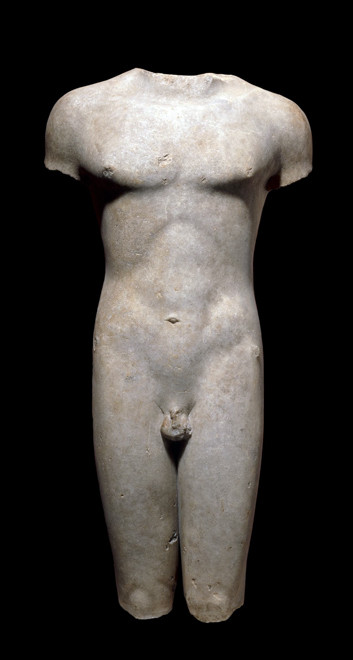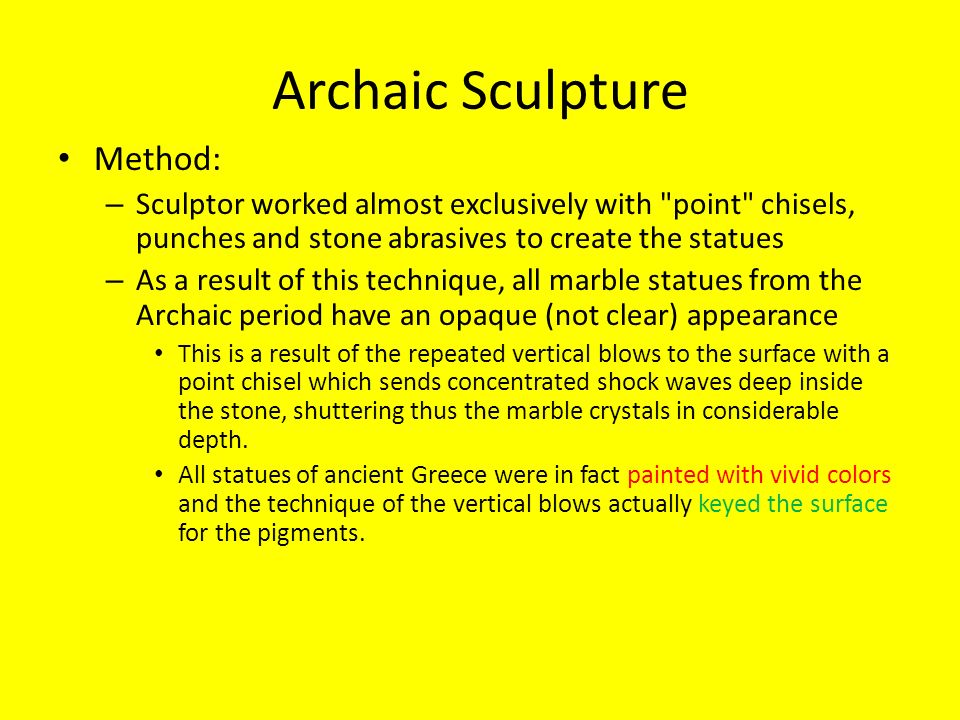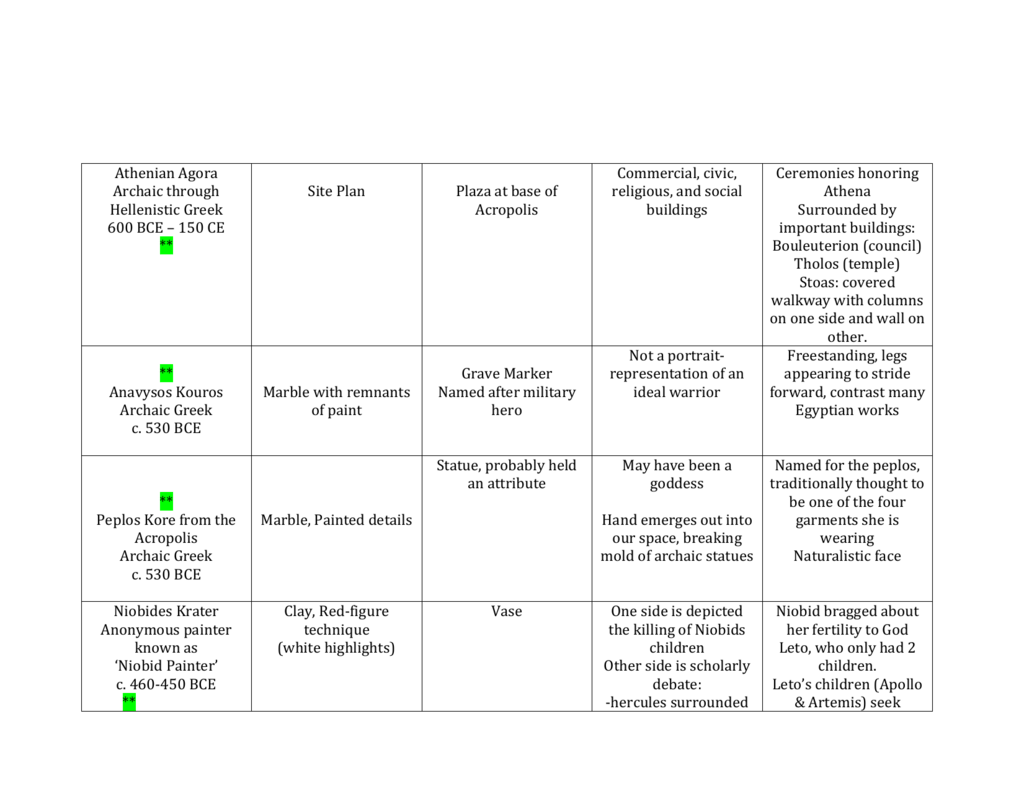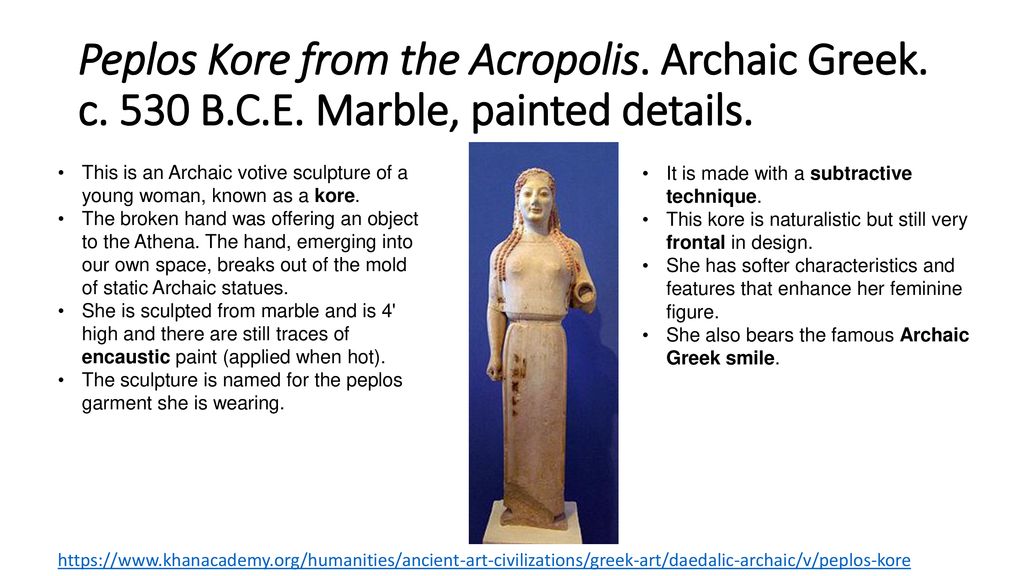Is supplanted in the seventh century by a more naturalistic style reflecting significant influence from the near east and egypt trading stations in the levant and the nile delta continuing greek.
Archaic marble technique.
Kouros archaic greek statue representing a young standing male.
Modern scholarship identifies three major stages in monumental sculpture in bronze and stone.
The archaic period saw a shift in styles of pottery decoration from the repeating patterns of the geometric period through the eastern influenced orientalizing style to the more naturalistic black and red figure techniques.
During this time figures became more dynamic and defined by more organic as opposed to geometric elements.
Although the influence of many nations can be discerned in particular elements of these figures the first appearance of such monumental stone figures seems to coincide with the reopening of greek trade with egypt c.
A striking change appears in greek art of the seventh century b c the beginning of the archaic period.
Ancient roman sculptors are predominantly known for two types of marble sculptures.
During the republican era artists carved realistic portraits of people including political leaders military officials and historians from the chest or neck up known as busts these life sized works are celebrated for their impressively.
The sculpture of ancient greece is the main surviving type of fine ancient greek art as with the exception of painted ancient greek pottery almost no ancient greek painting survives.
Portraits or busts and marble copies of greek bronzes.
At all periods there were great numbers.
The archaic from about 650 to 480 bc classical 480 323 and hellenistic.


























